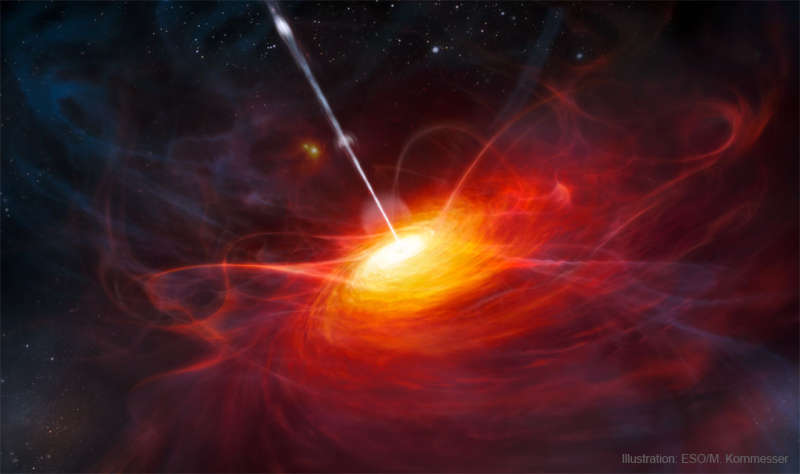
|
Credit & Copyright: ESO,
M. Kornmesser
Explanation:
What did the first quasars look like?
The nearest quasars are now known to involve
supermassive black holes in the centers of
active galaxies.
Gas and dust that falls
toward a quasar glows brightly, sometimes outglowing the entire home galaxy.
The quasars that formed in the first billion years
of the universe are more mysterious, though.
Featured, recent data has enabled an artist's impression
of an early-universe quasar as it might have been:
centered on a massive black hole,
surrounded by sheets of gas and an
accretion disk,
and expelling a
powerful jet.
Quasars are among the most distant objects we see and give
humanity unique information about the early and
intervening universe.
The oldest quasars currently known are seen at just short of
redshift 8 -- only 700 million years after the
Big Bang --
when the universe was only a few percent of its current age.
|
January February March April May June July August September October November December |
| ||||||||||||||||||||||||||||||||||||||||||||||||
NASA Web Site Statements, Warnings, and Disclaimers
NASA Official: Jay Norris. Specific rights apply.
A service of: LHEA at NASA / GSFC
& Michigan Tech. U.
Based on Astronomy Picture
Of the Day
Publications with keywords: quasar
Publications with words: quasar
See also:
